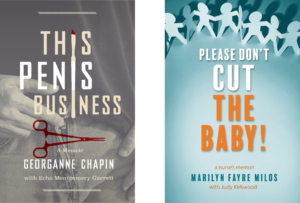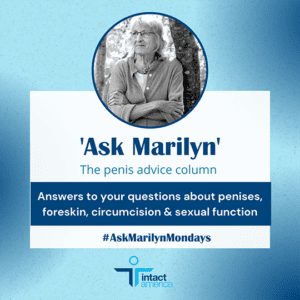
Intactivism 101: An Anti-Circumcision Guide for Foreskin Activism
Driven by a fervent commitment to bodily autonomy and human rights, pioneers of the movement to end circumcision coined the dynamic terms “intactivist” and ‘intactivism” to describe the actions and mobilization of those who advocate for the preservation of the male foreskin and oppose the practice of medically unnecessary circumcision. This article presents practical ways to engage in foreskin activism, which champions the rights of every individual to bodily autonomy and a common-sense approach to welcoming baby boys into the world as we welcome baby girls—as nature made them.
What is Intactivism?
The terms ”intactivism” and “intactivist”—a powerful blend of “intact” and “activism/activist”—represent a vibrant social movement and its participants who advocate for preserving the natural state of the human body, specifically concerning male circumcision. Originating as a direct response to the widespread practice of medically unnecessary routine infant circumcision, the goal of intactivism and intactivists was to shed light on the health risks associated with the removal of the foreskin from baby boys’ penises and the benefits of retaining the foreskin. Research by the pioneers of this movement into the history and reasons for this pervasive practice in the United States revealed that the supposed health benefits of circumcision were based on medical myths and cultural conditioning outside of religious tradition and ritual as opposed to any reasonable scientific or medical basis. As information was available and knowledge was accumulated, the core of intactivism embraced the fundamental right to bodily autonomy. By challenging societal norms and fostering critical dialogue, intactivism seeks to ignite a transformative shift in public perception and discourse surrounding circumcision to spare male babies, children, and adults the physical, psychological, and emotional trauma associated with medically unnecessary surgery on a sensitive sexual organ.
Intactivists and Arguments Against Circumcision
Arguments against circumcision may have started with the fact that it is medically unnecessary. Once that issue was proven (as a uniquely American fallacy) and information was available for dissemination on websites, videos, interviews with intactivists, and re-educating medical and health personnel through the NOCIRC (National Organization of Circumcision Research Centers) sponsored symposia all over the world, the ethical and human rights issue gained attention. Removing a natural functional body part (the foreskin) from an organ as sensitive as a baby’s penis brings up a wide range of concerns. Intactivists working to end circumcision represent the interests of non-consenting infants, who are unable to voice their decision on removing a body part (other than through their screams of pain and apparent emotional trauma) and cannot provide informed consent. The intactivism movement believes that the decision to circumcise a baby or child should be deferred until individuals are of an age where they can make choices about their own bodies based on the short- and long-term consequences of circumcision.
Intactivist Strategies and Initiatives
Intactivists employ a range of strategies and initiatives to raise awareness and advocate for the importance of genital integrity and informed consent. Through public protests, the distribution of educational materials, and outreach programs, they tirelessly educate parents and healthcare providers about the potential risks and ethical considerations surrounding circumcision.
Marilyn Milos, in Please Don’t Cut the Baby!, which chronicles the growth of the movement from the 1970s to today, writes about several early efforts to end circumcision that raised awareness in both the health community and the public. Notably, the “Bloodstained Men” movement utilized striking visuals and street theater to capture attention and ignite discussions on the ethical implications of circumcision. The men would appear at demonstrations in white outfits with red paint on the crotch, symbolizing the bloody wound of circumcision. Another robust response to ending circumcision was when a group of nurses at St. Vincent Hospital in Santa Fe refused to participate in infant circumcisions, declaring themselves conscientious objectors—a brave move considering they could have all lost their jobs, as Marilyn did when she began to educate parents at Marin General Hospital.
Marilyn points out that the most straightforward thing anyone can do to end circumcision is to spread evidence-based information about both the risks of circumcision and the human rights violations of a child’s body.
“Those who market anything and everything know that consumers trust personal recommendations above all other sources of information.”
Word-of-mouth can make a tremendous difference to individuals on the fence or simply clueless about circumcision.
However, the advent of social media and online communities has played a pivotal role in amplifying intactivist voices, facilitating the sharing of information, stories, and resources, and connecting like-minded individuals who share concerns. These digital platforms, like intactamerica.com, have become epicenters for constructive dialogue on the issues surrounding circumcision.

Intact America’s latest intactivism outreach campaign, Skin in the Game (skininthegame.org) features images of people of every race, ethnicity, sex, and body type who share their interest in the topic of circumcision and how the practice of circumcision has affected them. What it shows is that circumcision cuts through all of us. It has both short-term and long-term physical, psychological, and emotional consequences for male infants, children, and adults. But it also affects relationships and family dynamics. A wife or partner may not understand the sexual repercussions of a circumcision gone wrong. Children may be angry at their parents for allowing them to be circumcised. Parents may feel guilty about a decision made before they are fully informed.
Intact America Founding Executive Director Georganne Chapin reveals in the epilogue to her book This Penis Business that the intactivist organization, in tandem with the group Doctors Opposing Circumcision, is “on the cusp of signing off on a custom-developed consumer-facing electronic system called DoNoHarm.report” that will be launched state by state in 2024. The program will consist of standardized forms that collect complaints from parents and others who were pressured by doctors or hospital personnel to circumcise their sons, who experienced any aspect of circumcision complications, or who have been victims of forcible foreskin retraction, a common issue that both parents and medical personnel misunderstand. With this information, doctors and medical organizations can no longer claim they have not heard of any complaints about circumcision or have no access to records of complaints.
How to Get Involved in Intactivism
Anyone can become an intactivist in word and deed by recognizing that boys, like girls, are born perfect and that the foreskin is a functional body part with thousands of nerve endings that serve no one but the medical industry when they are amputated.
- Inform yourself and educate others by visiting intactamerica.org regularly (and supporting it with donations if possible) and other intactivist organizations, googling podcasts and listening to interviews on the subject, reviewing articles and videos, and asking questions and requiring answers.
- Hold healthcare providers at all levels accountable for providing you with information about circumcision. Do not rely on any one medical organization to do so, as they represent stakeholders in promoting circumcision because doctors and hospitals are paid for each circumcision they perform.
- Lobby lawmakers to make legal changes that support the rights of a child to genital autonomy and bodily integrity. If you can’t do that, support those doing so by publicizing their efforts through word-of-mouth or social media platforms.
- Initiate or participate in community events like Pride celebrations that highlight circumcision education and promote intactivism.
- Speak out about your own or your family’s experiences with circumcision complications.
- Buy or borrow the memoirs This Penis Business by Georganne Chapin and Please Don’t Cut the Baby! by Marilyn Milos, or listen to the audio versions of the books.
We outline practical steps for those interested in becoming intactivists and emphasize the significance of education, advocacy, and outreach. By responding to common counterarguments, intactivists seek to foster constructive dialogue and present evidence-based perspectives. Intactivism thrives through diverse strategies and initiatives, often aided by social media and online communities. As we conclude, we reiterate the paramount importance of informed decision-making, respect for bodily autonomy, and the ongoing dialogue surrounding circumcision and foreskin activism. We encourage readers to explore this critical subject further, engage in open conversations, and contribute to the broader discussion on the rights and choices surrounding circumcision. Engaging in respectful discussions and presenting evidence-based counterpoints allows for a comprehensive exploration of the topic, ultimately promoting informed decision-making and emphasizing the significance of consent in matters of personal health.
 Dear Marilyn:
Dear Marilyn: